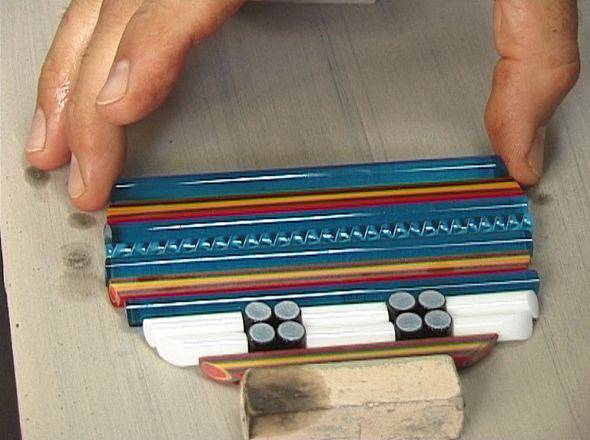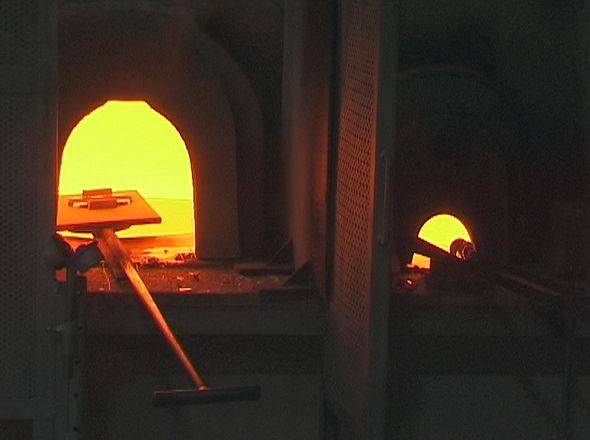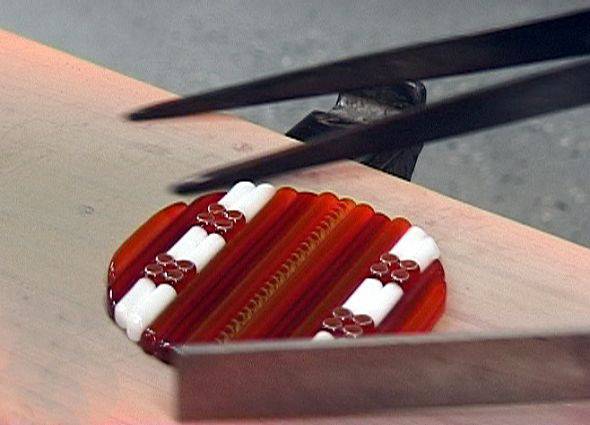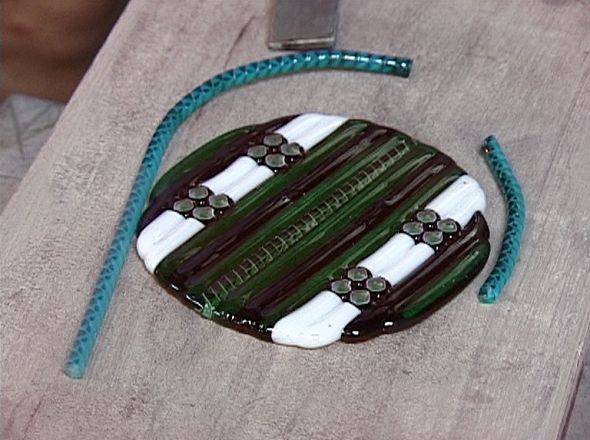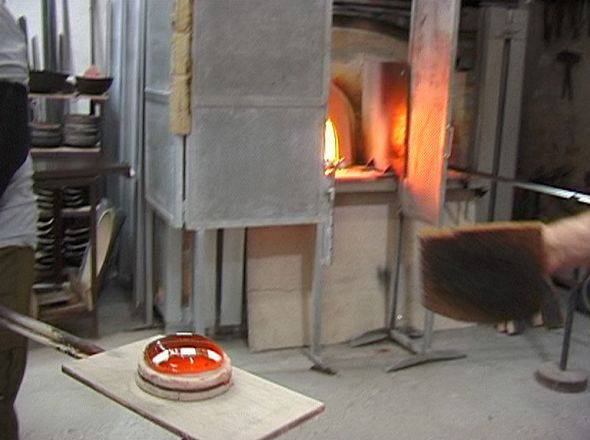Description
Video above: Mosaic Glass
This is a very old technique, which enabled glassworkers to produce concave forms before the invention of blowing. It presumably dates back to the 14th century AD and reached its peak in Hellenistic and Roman times. It was taken up in Murano in the 1870s, thereby becoming part of the Venetian technological tradition. It was recently exported from Venice to other continents.
Tessera made of coloured glass or sections of polychromatic rods, millefiori for example, can be laid together on a surface covered with refractory clay or on a surface of suitable ceramic and furnace fused. Then the resulting circular plate is laid on a concave or convex mould to give it a concave form. The edge can also be finished using a incandescent bi-coloured twisted rod before shaping. The inside surface and at times the outside one, must be finished with a wheel to smooth and flatten any irregularities on the surface.

